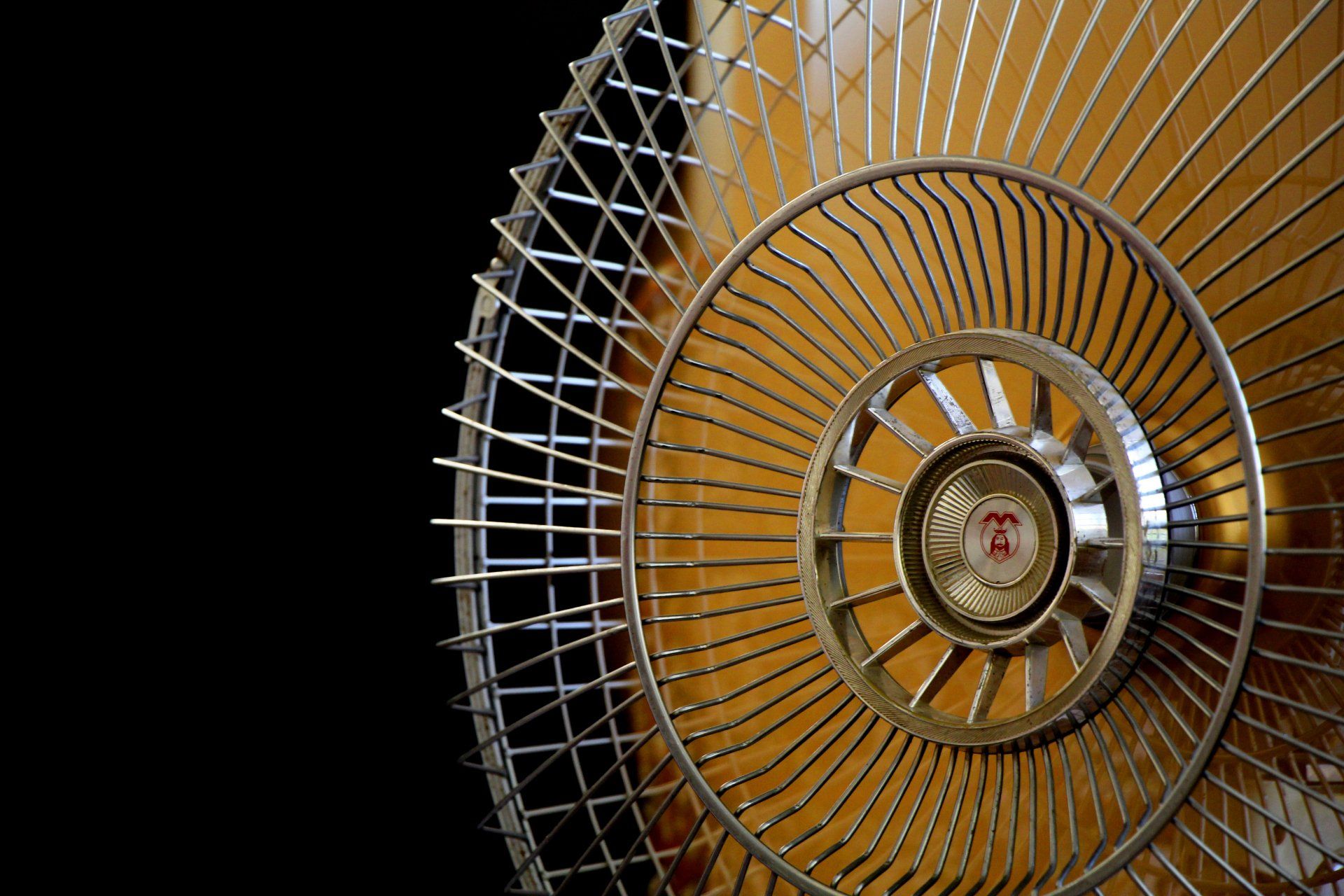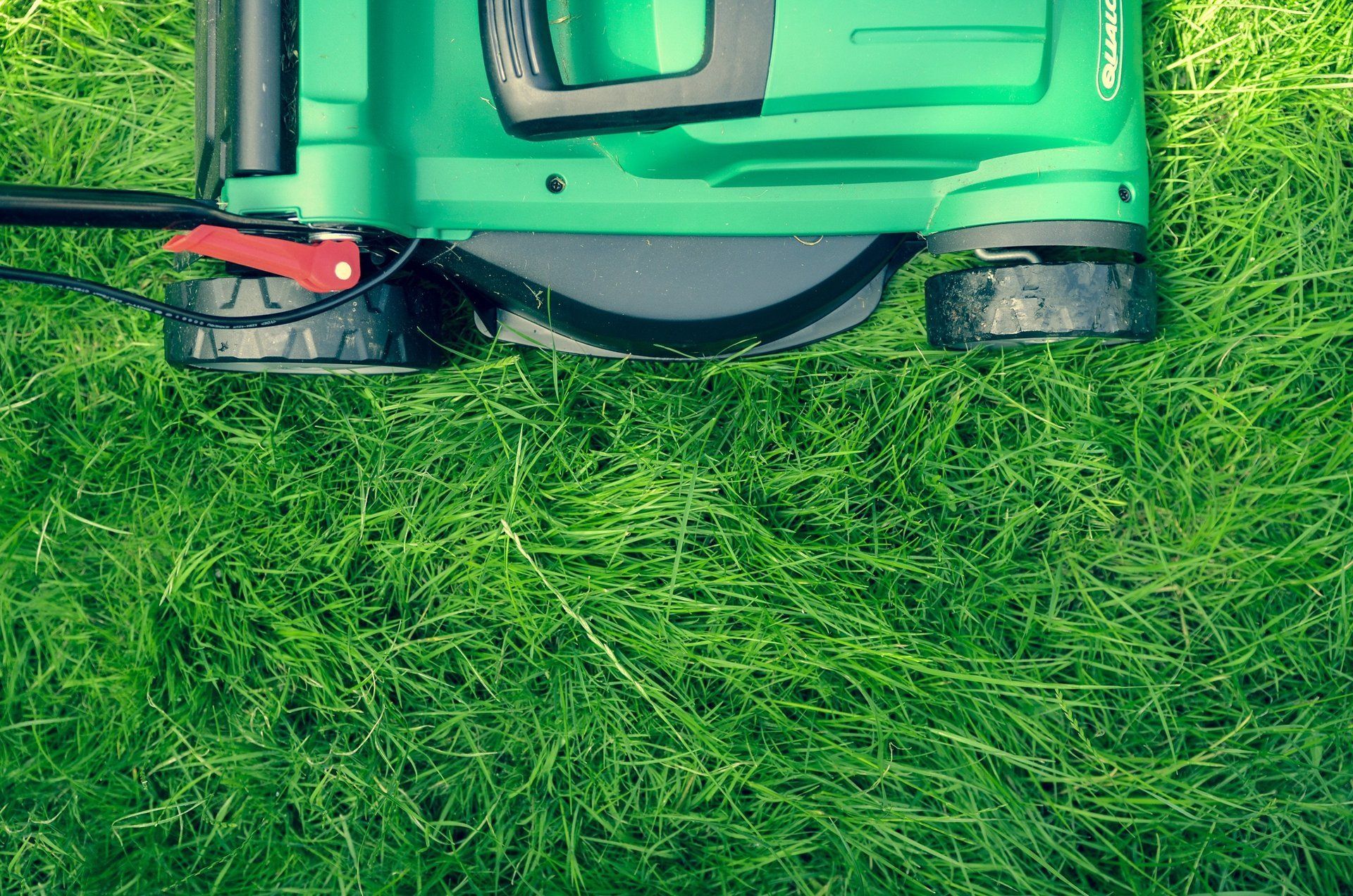Blog Layout
The Spring Home Maintenance Checklist
Nicky Becky • Feb 04, 2021
Cleaning and Maintenance Tips To Keep Your House In Top Shape After Winter’s Assault

When the weather starts to warm up, you can’t wait to spend more time outside. But once you’re outside, you may quickly realize that the ice, snow, and sleet of winter have taken their toll on your home. When the sun is out and the birds are chirping, it’s easier to see that paint has chipped or concrete has cracked. Warm weather not only signals the arrival of picnics and bike rides, but it’s also the start of the home maintenance season.
Even if everything on your property looks great, it’s important to make time to complete routine cleaning and maintenance to keep everything running smoothly, and to prevent repairs (and repair bills) in the future. To get you started, we’ve created a home maintenance list that helps you develop checklists for every part of your home. While the lists in this article may look long, most inspections can be completed in an afternoon.
To save money, you can complete most of the simple maintenance and repair tasks in this article with a little research and a few smart purchases from Kefauver TrueValue Lumber in Forest Hill, Maryland. We’ve provided some links to good tutorials throughout. And if you need extra help, our experienced staff can help you find the materials and tools you need to keep your home in shape.
Your Roof and Gutter Spring Checklist
Let’s start at the top of your home. After all, your roof and gutters have been working hard all winter, protecting your home from Maryland’s snow, sleet, and ice. So, it’s no surprise that this is the one of the first parts of your house to inspect once the weather warms up. Here’s a checklist to help you get started.
Clean Your Gutters
Gutters keep water off your doors and windows and funnel runoff away from your foundation. If your gutters can’t provide proper drainage, it won’t take long before your home is damaged. That’s why it’s critical to check for loose or leaky gutters thoroughly. Make sure all your downspouts are positioned to keep runoff away from your home’s basement, crawl space, and foundation.
When the weather warms up, grab a ladder, and find a partner to hold the ladder safely. Using heavy-duty gloves to protect your hands from any metal, roof shards, or glass, use your hands to clear debris from the gutters. Then use a hose to run water through downspouts to check for blockages. If your downspout is blocked, you may need a professional to clear it safely, without damaging the gutter system. To find out more about clearing blocked downspouts, check out this tutorial from This Old House.
Inspect Your Roof
Even small issues on your roof can lead to big problems down the road. Drips in the attic can quickly lead to mold. Improper damage can send water into your insulation. That’s why it makes sense to set aside time every spring to give your roof a complete visual inspection. If you’re nervous about heights, have a steeply pitched roof, or are concerned about your fitness or balance, play it safe and hire a licensed roofer to perform the inspection. When you inspect your roof, look for cracked or loose roof tiles, exceptional wear or tear, worn spots, warps, curling, or even missing tiles. Clear off any buildup of pine needles, branches, or other debris. Check for mildew or moss (and be careful not to step on it. It can be very slick.) And of course, look for big problems like sagging rooflines. If you haven’t cleaned your gutters yet, it’s easy to check their cleanliness from the roof, so it may make sense to make a quick evaluation of your gutters as long as you’ve made the trip up.
Your Windows and Doors Spring Checklist
Did you winterize your windows and doors last fall? If you put up storm windows or insulation, now is the time to remove that extra layer of protection. You’ll also want to give your doors and windows a little extra attention this spring to ensure they’re in good working order. Open windows and doors, with good screens in place, are a great way to cool or ventilate your home during Maryland’s pleasant spring and summer weather. When you spend a little extra time getting your windows and doors in shape, and you feel the benefits all year long. Here’s a checklist to help you keep on track.
Secure the Seals Around Doors and Windows
When the weather gets warmer and colder, the seals around your doors and windows expand and contract. Cold weather often causes the seals around your doors to loosen, harden, and even crack. Once the warm weather arrives, take time to carefully inspect these seals to determine if they’re still sound. Be sure to check the inside and outside of every window. If your second- or even third-story windows require a ladder, play it safe and get a partner to help you secure your ladder during inspections. If you can get a third partner involved, it’s smart to check the interior and exterior windows at the same time. That way you can open and shut windows and examine issues from both angles.
Test Weep Holes
Not sure what a weep hole is? They’re the little holes located on the bottom of an exterior window frame. Vinyl windows often have vented slots on the bottom of the exterior frame. Weep holes allow rain that works its way into the frame to drain away from the house. These holes can become clogged, which will cause water to back up and eventually damage the frame.
To make sure your weep holes are doing their jobs, spray a little water on the window with a hose. If the holes are unclogged, you’ll be able to see a stream of water exiting from the holes. If the water doesn’t exit quickly or seems to come out in spurts, a bit of compressed air should help unblock it. Some homeowners use a stiff wire, like a wire hanger, or even a toothpick to clear simple blockages. Once you’ve cleared the hold, repeat the hose test, to make sure you’ve removed the blockage. If you’re unable to fix the issue, it’s smart to call in a window expert to remedy the obstruction before any significant damage occurs.
Check Your Wood Trim
If you’ve got a great old Maryland home, you probably have a lot of wooden trim. Take advantage of spring weather to check your trim carefully for water damage, mildew, or other kinds of rot. Gently probe any wood trim around your doors and windows, and carefully examine the wood for signs of mildew, and to check the condition of your paint.
If you come across small patches of rot, remove the rotted wood, and use a polyester filler to fill or rebuild the damaged areas. Use a putty knife to gently pack it in and then smooth the patching compound. Work in layers, adding a bit at a time, and letting each layer dry. Polyester filler dries quickly, in about 10 minutes, so work fast on your patching. Once you’ve repaired your wood, touch up with paint.
If you find your painted wood trim has mildew, wipe it clean with a sponge and diluted bleach (about ¾ cups per gallon.) Stubborn mildew may require multiple cleanings. Once you’ve removed the mildew, rinse the trim clean with a hose to remove any residual bleach.
Re-Caulk Your Exterior
Take a close look at your windows and doors to check the caulking. Check the seals on your storm doors and exterior doors. On wooden windows, check the caulk and the glazing around all of the panes. Finally, inspect windows and doors for air leaks. If you can rattle them when closed, they are probably leaking air.
Caulking usually exists throughout your home, whenever two different building materials meet. Pay extra attention to caulking on exterior corners, in areas where the foundation meetings siding, stone, or brick, around spigots, and where chimneys and siding or brick meet. Also look for gaps around hoses, pipes, or wires that enter your home. Even mail slots may have caulking.
Fixing caulking issues will depend on the type of problem identified. Kefauver’s in Forest Hill has a variety of easy-to-use caulking and weather stripping products to help you repair these kinds of issues. Our experienced associates can help you find the right product for your project.
Re-Glaze Your Wooden Windows
If you have wooden windows, the panes are held in place with a hardened putty used to create a weathertight seal. On all old window, the glazing needs to be replaced periodically. You can test the glazing’s integrity by gently tapping on each pane. If you detect rattling, it’s time to re-glaze. Luckily, re-glazing is a simple home repair that can be completed quickly, once you know how. For tips on re-glazing, check out this tutorial from Popular Mechanics.
Paint Your Doors
Doors get a lot of wear over the winter. And because we see them up close, every day, they seem to wear out fastest than the rest of the home. Painting your doors is a great spring project. After all, the best time to paint outdoors occurs when the temperature gets above 50 degrees, before the humidity and heat of the summer.
For the best results, remove the door from the hinges, and remove the hardware. Clean the door thoroughly, and scrape or sand off buildups or chipped areas. Give the entire door a light sanding and carefully clean up any dust with a tack cloth. If you’re staining your door, and want an exceptionally smooth finish, look into wood conditioners.
Use a brush to paint in around the door’s windows and panels and use a high-density foam roller for larger areas. Use two or three light coats instead of one heavy coat, to minimize or even eliminate brush marks.
Your Attic and Chimney Spring Checklist
If you’re lucky enough to have an attic or chimney, you probably don’t think about them much, but it makes sense to do a little maintenance each spring to keep them in tiptop shape. We’ve put together suggestions for a few smart steps to take to keep both your chimney and your attic in good working order.
Clean the Chimney
Once you’re done with the chimney at winter’s end, it’s a good time to check for signs of damage. While you’re checking your roof, spend a little extra time to inspect the chimney. If it’s made of brick or stone, make sure the joints are clean, structurally sounds, and free of cracks. For stucco chimney, check the plaster for chips, cracks, or discoloration. If you see white buildups or white discoloration, you could have water damage. If you see any structural issues, address them now, in warm weather. These kinds of problems will only worsen over time.
If you have a wood-burning stove or fireplace, spring is an excellent time to have the flue cleaned and inspected by a certified chimney sweep. A chimney sweep should be able to look at any structural issues you’ve identified and recommend remedies.
Inspect the Attic
Visit your attic in daylight and check for any light peeking in through cracks or crevices. Even small cracks in your roofline can cause significant issues if not fixed promptly. If you discover large cracks, call in a professional since these may be signs of problems with the foundation or the structure
Using a flashlight, check the ceiling signs of moisture, leaks, or rot. If you have whole house fans, beat the summer rush and inspect the belts now. If you haven’t had a professional look at your attic fan in the last few years, make an appointment so you can avoid any issues at the height of summer.
If you have an older home, you may have attic vents that move air out of the kitchen, laundry or bathrooms, directly into the attic. Make sure these vents are in good working order and pumping the air outside, where it belongs.
If your attic has insulation, make sure the insulation has weathered the winter and remains dry and in good condition. Finally, take a look around and look for signs of birds, bats, bugs, or rodents. Inspect for droppings and call an exterminator if you detect issues. If they’re in the attic, they’re also able to get into other parts of your home.
A Spring Checklist for the Driveway and Foundation
While driveways, sidewalks, and foundation are often ignored, they are some of the most critical parts of your home and property. These concrete and masonry elements need care and maintenance, just like every other area of your home.
Fix Cracks in the Driveway and Other Paved Surfaces
When you have asphalt, macadam, or concrete driveways, spring is the time to check for issues. Spend some time outside carefully checking your concrete slabs and pavement for cracks or signs of movement, shifting, sinking, or buckling. Make sure any water on these slabs will move away from your home’s foundation. If you see cracks, it’s easy to repair them with a crack filler or silicone caulk from Kefauver’s True Value in Forest Hill. Click here for a good tutorial on filling concrete cracks. Click here for a tutorial on filling asphalt or macadam cracks.
Test Your Spigots, Outside Faucets, and Garden Hoses
While Maryland has winters that are milder than our northern neighbors, winter freezes can still damage outside spigots or faucets. Once the weather warms up, test your faucets for damage by placing your thumb over the opening. If it easily stops the flow of water, the pipe inside the home is cracked or damaged and will need to be replaced. If you didn’t store your hose for the winter, now is the time to check it for cracks or rot.
Inspect Your Foundation
Spring is a good time to check your foundation for cracks, before summer foliage obscures it. Even if you’re not able to see the entire foundation, inspect the sections that are exposed, paying special attention to better views that may be obtained in the garage or basement. Look for long cracks or shifts that may indication damage from freezing and thawing. Foundation cracks are not a DIY job, so if you suspect trouble, call a professional to avoid big issues down the road.
Clean Paved Surfaces
Winter salts and oils can do a number on paved concrete, asphalt, or macadam. A hose, a scrubbing broom, and some bio-degradable detergent will do the trick for most winter build-up. If you’re noting green or blueish stains, you’ve got mildew. Use a weak bleach solution (3/4 cups bleach to one gallon water) or try a power washer on concrete (but not on asphalt or macadam.) If your concrete is turning brown, you’ve got rust that have resulted from the iron in lawn fertilizers or even from the stones used in your concrete. Click here for tips on removing rust from concrete.
Your Plumbing and Basement Spring Checklist
The plumbing and basement of your home are some of the hardest working elements in your house. While they seem to keep on working with minimal effort, if you keep ahead of some simple maintenance for these areas, you may save big bucks down the road.
Keep Your Window Wells Clean
It’s easy to neglect the window wells in your home but keeping them clean and free of debris will not only ensure drainage works properly, it may also prevent water damage in the future. You can put window well maintenance on your monthly to-do list from March through November, or you can get window wells covers. You’ll find lots of options at Kefauver’s Lumber in Forest Hill.
Make Sure Your Sump Pump Works
Because basements are below grade, they are prone to leaking when the water table rises, or even after a big storm. Sump pumps are installed in basements to take care of minor flooding. Because we enjoy a wet climate and a high water table, sump pumps are common in Maryland basements. To keep yours in good working order, test it out at least once a year. Check yours by pouring water into the basin to see if it starts pumping the extra water out. If you have an older pump, you may want to conduct this test twice a year. If your sump pump fails the test or you have performance issues, call a plumber to fix the pump or replace it. A good sump pump can save a homeowner thousands in damages, so it’s important to keep it in good working order.
Drain Your Water Heater
Drain your water heater once a year to reduce sediment build up. Over time, sediment will collect at the bottom of your water heater, interfering with the heater’s performance, and often resulting in irreparable damage. To remove sediment from your tank, start by turning off the water supply, and then turn off the water heater. Attach a drain hose to the spigot on the tank and have several 5-gallon buckets handy.
Before you start draining the water heater, move to a kitchen or bathroom sink, and turn on the hot water, using all the hot water available. This will drain most of the hot water (so you’ll have less to deal with.)
Return to the water heater. Place the hose in a bucket, and open the drain valve, allowing all the water to drain from the tank. The water will be hot, so be careful. Once all the water is out, turn the water supply back on to the tank, allowing it to fill partially before turning it back off. This will wash up remaining sediment. When water off, drain the tank again. Repeat this process a few times until the water runs clear. For a complete tutorial form the DIY network, click here.
Check Your Foundation
An unfinished basement can offer a lot of clues to the state of your home’s foundation. Check your walls and floors for new cracks or leaks. If your walls have shifted in any way, consult a reputable contractor to assess whether the shift is a normal part of home settling or a structural problem that needs a remedy.
Your HVAC and Garage Spring Checklist
Unless you take a walk around the exterior of your home, you probably don’t see your HVAC much, yet it’s responsible for making every part of your home comfortable and livable. When it comes to the garage, you might want to just shut the door and forget about it, but spring is the perfect time for a thorough inspection. Here are some guidelines to help you make sure your HVAC and your garage are ready to serve your family throughout the coming year.
Pay Attention to Your HVAC
Summers can get pretty hot in Maryland, so it’s smart to get your HVAC checked in the spring, before the rush of summer repairs. You can do some things on your own. Others will require a professional. For example, it’s relatively easy to clean or replace your HVAC filter. Most homes will need to do this more than once a year. If your filter is noticeably darkened when you change it, you’ll know you waited too long. Dirty filters tax your HVAC system, making them work harder, cost more, and break more often.
Call in a professional to do a yearly check-up. They should check the thermostat and controls, clean the compressor, lubricate the parts, and check the condensate drain. They should also be able to report on the general condition of the unit, and let you know how many years you have before you’ll need to replace the unit. Since HVAC units are pricey, you may want a few years to save up for your next one.
To keep your HVAC working at its best, make sure it has good airflow. While it’s tempting to camouflage your HVAC unit with shrubs, keep shrubs and plants at least 3 feet from the unit, and avoid planting shrubs or flowers nearby that shed leaves or blooms, since these may clog up the fan.
Balance Your Garage Door
A balanced garage door works better, is safer to operate, and extends the life of your remote opening system. To test the balance of your garage door, start with a closed door. Once it’s shut, you can disengage the remote door opener by pulling the opener release handle near the unit, near the ceiling, at the center of your garage. Once the remote is off, manually open the door halfway, and then let go. If the door is a balanced door, it will remain half opened. If the door falls down, the door’s tension needs to be increased. If the door continues to move up, the door spring has too much tension. Balancing a spring is dangerous (since mistakes may result in falling garage doors) so call in a professional.
Maintain Your Garage Floor
Keeping your garage floor clean not only looks great, but it also helps you identify issues in your foundation and structure. While no one wants to clean out their garage, once a year you should remove everything from the garage, and hose down the surface. You may want to use a mild detergent, or diluted bleach (3/4 cups bleach to one gallon of water.) Removing salts, solvents, or oils will help you keep your garage floor in better shape, longer.
Before you move everything back in, check for cracks in the garage floor and in the places the garage floor joins to the home’s foundation. Small cracks may be the result of quick freezing and warming and may be easily fixed with products from Kefauver’s in Forest Hill. Larger cracks may point to broader issues in your home’s foundation and should be inspected by a professional.
Your Spring Checklist for Appliances
Your home is full of appliances, but many homeowners don’t pay attention to them until they break down. However, it takes just a few hours to work through your spring maintenance list for major appliances. Spending this short amount of time on spring maintenance and cleaning will pay off in the long term by saving you money on energy bills and future repairs.
Check Your Water Pressure
We all like plenty of water pressure when we take a shower, but high water pressure can actually harm pipes, connections, and appliances. Not to mention it’s a water waster, and expensive. Checking for high water pressure is easy with a few simple tools from Kefauver’s. Click here for a tutorial.
Clean Your Dryer Vent
No matter how fancy your dryer might be, some lint will get past the link trap, and will build up in the dryer vent. To clean the vent, remove the hose from the back of the dryer. Use a wet/dry vac or even a strong vacuum to pull debris out of the hose. Very clogged hoses may require the use of a special cleaning kit with power drill attachment that consists of a brush on a long flexible rod. You can find these types of cleaning kits at Kefauver’s in Forest Hill.
Check the Hose to the Washing Machine
Make sure your washing machine hose is in good shape. Check for any signs of moisture or leaking on or around the hose. Hoses with cracks or brittleness should be replaced since these are signs of future leaks.
Vacuum Your Refrigerator Coils
Depending on your model, your refrigerator coils are on the bottom or back of your fridge. Dusty coils are less efficient and make your refrigerator work harder. Happily, cleaning coils is easy (though moving your refrigerator so you can reach the coils may be a challenge.) Simply use your vacuum hose or brush attachment. Bendable coil-cleaning brushes, made to fit into tight areas, will help you do a more thorough job.
Freshen Up Your Disposal
The disposal can get smelly but cleaning can be quick and easy. Feed a tray of ice cubes in for a loud, but effective, cleaning. Add a half a cup of baking soda if the smell remains. The small, cleaning pellets made for disposal cleaning do a great job. And if all else fails, drop a few leftover lemon rinds down your disposal every few weeks.
Check Your Fire Extinguishers
Okay, these are not technically appliances, but as long as you’re making the rounds, give your fire extinguisher a quick test. First, make sure you have enough fire extinguishers, and that they are easy to access. Secondly, make sure the pressure gauge is in the green range. Take the extinguisher outside and give it a quick test.
Smoke and Carbon Dioxide Detectors
Again, these are not technically appliances, but if it’s springtime, it’s time to change the batteries. Many people use daylight savings time as a reminder to change the batteries.
Your Spring Checklist for Lawn and Garden
While you may have been able to ignore your lawn and garden during the winter, spring reminds us that it’s time to get outside and get your yard in shape. Depending on how elaborately you landscape your property, working on your lawn could become a full-time job in the spring. That’s why we’ve narrowed down our recommended lawn and garden maintenance list to include just a few must-do items, that even non-gardeners should complete.
Tune up the Lawn Mower
If you take care of your lawn mower in spring, not only will your lawn look better, but you will also extend the life of the machine. Start by turning the mower over and checking for any winter guests such as mice, wasps, or bees. Remove any nests or debris. Consider taking the blade to a local sharpener to give you a cleaner, easier mowing experience. Empty any gasoline left in the mower from the previous year and replace it with fresh fuel. Most mowing machines require oil—make sure you change the oil once for every 20-30 hours of use. If your mower has an air filter, now’s the time to change it, and give it a new spark plug while you’re at it. Get a full lawn mower tune-up list here.
Move Firewood
If you have a wood-burning stove or fireplace in your home, you know that spring is the end of the wood burning season. As the weather warms up, it’s time to move any firewood stored near your home. Even if you use wood for outdoor grills or firepits, firewood is best kept at least 18 inches off the ground at least 2 feet from the nearest wall or structure. This will keep the wood dry and reduce the chances of infestation by pests. It will also reduce the likelihood of pests in wood damaging adjoining walls or fences. If you have a tarp or open-walled pavilion or shed, consider covering your firewood to keep it dry.
Add More Mulch
Mulch is an easy and attractive way to reduce weeds and add nutrients to the soil. By placing mulch around trees or on borders, you’ll also reduce the need to trim grass, making mowing more manageable. If you’re not sure about the best way to mulch, these tips from the Weekend Gardener might be helpful.
Your Spring Checklist for Your Grill and Deck
You know its spring when you walk out on your deck or start up the grill. We’ve provided a handy checklist to help you prepare for deck season and a summer full of great grilling.
Now We’re Cooking with Gas Grills
Even if you’re a die-hard griller who uses the gas grill all winter long, spring is a great time to give your grill a complete tune up. Look for food drippings and grease buildup on the exterior, which can attract pests, and scrub these spots with a soft brush and soapy water. For stainless steel exteriors, you may want to use a household cleaner created for stainless steel. Once you’ve cleaned your grill’s shell, rinse and wipe dry.
Before you start the grill up, check the hose. Make sure it’s clean on the outside before turning on the grill. Heat your grill and give the grates a good scrubbing. It’s smart to get a new brush every year at Kefauver’s in Forest Hill. Use a softer brass brush for porcelain enamel-coated grill grates. Save the steel grill brushes for stainless steel grates. If you have a non-stick grate, consider a nylon grill brush, and reserve cleanups for cool grills.
Check the hose from your propane to the burners. If there’s any build-up on the hose, clean it off before starting your grill. If you see any wear or cracks, replace the hose. Be sure to start of the season with a clean grease trap.
Next, take a few extra minutes to clean the burner assembly. First, turn off the gas, disconnect the lines, and disconnect the burner unit. Remove the unit, and clean gently with soapy water. Replace and reattach the gas lines.
When in doubt, use products labeled for use with grills.
Doublecheck Your Deck’s Structure
Once the weather warms up, the deck will become one of your favorite spots. That’s why it’s important to make sure your deck is safe and structurally sound. In addition to keeping the top of the deck looking great with staining and sealing, it’s important to take a close look at the support structure. Examine the ground support to see if any posts are unsteady or show signs of rot. Look at every connection to check if it’s secure. Check for properly-fastened ledger boards and replace any missing on damaged hardware. If you’re concerned about the stability of your deck, have a reputable contractor inspect it, and make repairs necessary before allowing your friends or family on the deck.
Time to Seal or Stain Your Deck
Cleaning and staining your deck make your deck look good, but they also preserve the wood, and extend the life your deck. When choosing cleaning and staining options, you’ll find hundreds of options. Research your choices carefully to make sure they’re right for the type of wood on your deck.
Kefauver’s TrueValue Lumber is Here to Help
No matter which season you’re currently in, you know there’s a lot to do to keep your home running smoothly, and to prevent big repair costs in the future. The team at Kefauver’s is here to help homeowners in Forest Hill and the surrounding Maryland communities make the most of their home and garden. Visit us today to find out how we can help you.
Store Hours
- Monday
- -
- Tuesday
- -
- Wednesday
- -
- Thursday
- -
- Friday
- -
- Saturday
- -
- Sunday
- Closed
Kefauver Lumber True Value










